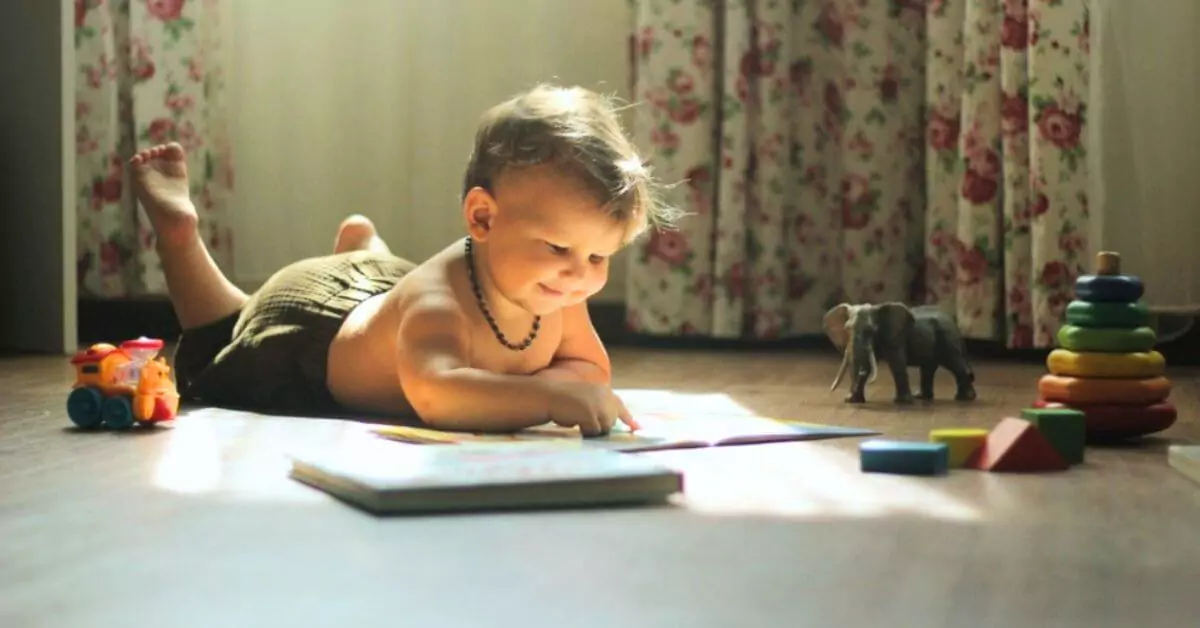Do you worry about your home’s safety for your little one? I remember the early days with my baby at home, full of joy mixed with concerns about hidden dangers.
A clear childproofing checklist can help you stop accidents at home and bring you peace of mind.
A childproofing checklist helps make your home safe for your baby. Learn easy steps, see clear babyproofing steps in action, and get useful advice on home baby safety with tips on cabinet locks, outlet covers, and more for every room.
In this article, I explain what babyproofing means, share my babyproofing list ideas, and walk you through room-by-room steps.
I offer advice on handling items like cabinet locks, outlet covers, baby gates, and corner protectors.
Whether you need a kids’ safety checklist or a toddler proofing list, my tips will help you set up a safe area using the right home baby safety products.
I also include important babyproofing essentials such as drawer latches, door knob covers, and window guards all to make your house a secure home for your child.
Before jumping into the content, you can check these key takeaways.
Key Takeaways:
- Learn what babyproofing means, when to start your plan, and how to make a detailed baby home checklist for child safety at home.
- Follow step-by-step advice using babyproofing essentials like drawer latches, door knob covers, and window guards.
- Get clear room-by-room tips for the nursery, kitchen, bathroom, and living room with helpful parenting safety tips.
Table of Contents
ToggleWhat Is Babyproofing?
Babyproofing means making changes in your home so that your child can explore safely. I found out early that everyday items such as loose cords, open cabinets, or uncovered outlets can cause problems.
That is why I use a childproofing checklist or babyproofing list to split the work into small steps and check for dangers.
Babyproofing is not about taking away the cozy feel of your house. It is about keeping your home safe for your curious child.
Parents use tools like cabinet locks, outlet covers, and door knob covers to block dangerous areas.
Small items like corner protectors and toilet locks add extra safety in every room. Each of these babyproofing essentials does its part in protecting your child and creating a home focused on child safety at home.
Whether you are a new parent or want new ideas to update your plan, a clear list of babyproofing tips will help you cover every part of your home.
When to Babyproof Your Home
The best time to begin is early. I worked on my home safety long before my baby could crawl. As your baby begins exploring, it’s crucial to check places like windows and staircases. Here’s how to baby proof windows and baby proof a spiral staircase step by step
Experts say that you should start your baby’s home checklist once you know a baby is coming.
Begin with simple steps during pregnancy and keep checking your toddler proofing list as your child grows and reaches new steps in life.
For instance, I put up window guards and appliance locks when my baby was still very young.
Later on, when my child started moving around more, I updated my list to add even more safety items.
I printed a baby safety checklist PDF and revisited it often. This habit helped me add new items, like extra door knob covers, whenever they were needed.
A regular check of your list makes your home a secure space as your child grows and faces new challenges.
Baby Growth Chart Calculator
A Baby Growth Chart Calculator is more than a tool to track how fast your child grows. It also tells you when to adjust your safety plans.
When your child moves from sitting to crawling or from crawling to walking, it is a sign to check your childproofing checklist again.
In my home, each new milestone made me look at my list once more and check all the rooms carefully.
When the calculator showed that my child was getting bigger, I rechecked each area with extra care. When my child started climbing, I added new items from my DIY babyproofing ideas and went through my kid’s safety checklist again.
This kind of watching over things gives you a better chance to protect your baby at every stage of growth.
How to Babyproof Your House
Figuring out how to babyproof your home took a long time for me. I began with a detailed childproofing checklist that covered every room in the house.
I worked one room at a time. I started in the living room, where I looked for hazards such as loose baby proofing cords, sharp corners, or items that could harm a curious child.
I used cabinet locks to keep dangerous items away. I attached outlet covers to each socket and put up baby gates to block off areas that should stay off-limits.
I also fitted drawer latches so that small hands could not open cabinets holding risky objects. After finishing a room, I marked it off on my printed checklist.
This careful process helped me use trustworthy baby safety products and follow my detailed plan to keep my home safe for my child.
Babyproofing the Nursery
The nursery is a special room for your baby and deserves extra attention. I made the nursery my top priority on my childproofing checklist.
I set up the room with crib safety in mind, using furniture anchors to keep heavy items steady and removing any choking hazards from low surfaces.
I added cabinet locks and simple ways for drawer safety to keep dangerous items away. I also set up a nursery monitor to watch over my baby at all times.
Every small detail—from soft bedding to window guards—helped make the room a safe space where my baby could sleep and play without worry.
I kept a printed babyproofing checklist close at hand and updated it often when new ideas for babyproofing the nursery came along.
Babyproofing the Kitchen
The kitchen is an important and active part of a home, but it can be very dangerous for a small child. I made a special part of my childproofing checklist just for the kitchen.
This room has risks like hot surfaces, sharp tools, and open cabinets.
I started by putting in stove guards and appliance locks to block off dangerous areas.
I added cabinet locks and safety plugs, and made plans for storing sharp objects safely. I kept an eye on outlet covers and managed cables around kitchen appliances.
I used my printed list to check every corner so that nothing was missed. All these steps helped create baby kitchen safety so that even when I was cooking, I knew my child was safe.
Babyproofing the Bathroom
The bathroom is a special room that needs extra care because wet floors, small items, and sharp edges can pose risks. I made a separate part of my childproofing checklist just for the bathroom. I used toilet locks, cabinet latches, and anti-slip mats to reduce problems.
I also added faucet covers and put in a hot water guard to help stop burns. All these babyproofing essentials work together to keep the bathroom safe.
I often check my list on weekends and make small updates if I notice anything new. For instance, when my child was a little older and more curious, I added extra door knob covers to keep the cabinet doors shut tightly.
I even found that placing a bright, easy-to-see sticker near a slippery spot reminds me to check the anti-slip mats regularly. A friend of mine shared that she sometimes uses a small rug in front of the sink to give extra grip, and that idea works really well too. Every little change makes a difference when accidents can be so serious in a room like the bathroom.
I also ask my partner for help to double-check the bathroom each time before bedtime. When both of us look at the list, we catch more hazards and feel much better knowing our child is safer.
The consistent review of our childproofing checklist has given us the comfort we need to let our little one move around more confidently, without the constant worry of accidents.
Babyproofing the Living Room
The living room is where the family gathers, and it can hide many unseen dangers. I made a detailed childproofing checklist for the living room, and I went through every corner to cover all the spots that might hurt a child.
I checked for things like loose baby proofing cords and sharp edges on furniture that might not be safe for a curious child.
To keep heavy items secure, I used TV straps and added furniture padding on corners that might hurt someone if bumped.
I also made sure that small objects were stored in places where little hands could not reach them. One day, while playing together, my child reached for a remote control that was left on the coffee table, and it made me realize how quickly a safe area can become risky if we are not careful. That moment led me to put even more effort into my kids safety checklist.
I added a few smart ideas along the way, like using edge bumpers for sharp tables and even arranging some of our favorite books on low shelves so that there are no dangerous items within arm’s reach.
Entertainment units often attract toddlers. Learn how to baby proof a TV stand and baby proof a coffee table with child-friendly solutions.
My neighbor once told me about a simple trick where they keep important family photos on a high shelf to prevent any chance of breakage, and I decided to follow that advice, too.
We also try to make the living room fun and safe at the same time by turning it into a small play zone. Together with my partner, we sometimes spend a few minutes after dinner going through the room, checking if everything is as safe as it can be.
This way, we catch any risks early, and our home remains both a comfortable gathering place and a secure space for our child to play freely.
Frequently Asked Questions
How do I create an effective childproofing checklist for my home?
Walk through each room to look for home hazards. Write down every risk in your baby home checklist and list items like cabinet locks, outlet covers, drawer latches, and door knob covers. Check your list again as your baby grows and add fresh ideas and fixes as needed.
What should I include in my baby proofing kit?
A complete babyproofing kit should have safety plugs, baby gates, corner protectors, toilet locks, and window guards. Look at what many parents trust among top rated babyproofing products and baby safety products. If you want a ready-made list, try a baby safety checklist PDF to help keep track.
Conclusion
I hope my childproofing checklist and the room-by-room tips in this article help you make your home safe for your little one. From the nursery to the kitchen, bathroom, and living room, every room deserves its own careful set of fixes and updates.
Use these clear steps and follow a room by room babyproofing plan to create a home that is a safe place for your child.
Download a baby safety checklist PDF and explore some helpful DIY babyproofing ideas today. Share your tips and join our group of parents who care about child safety at home.

